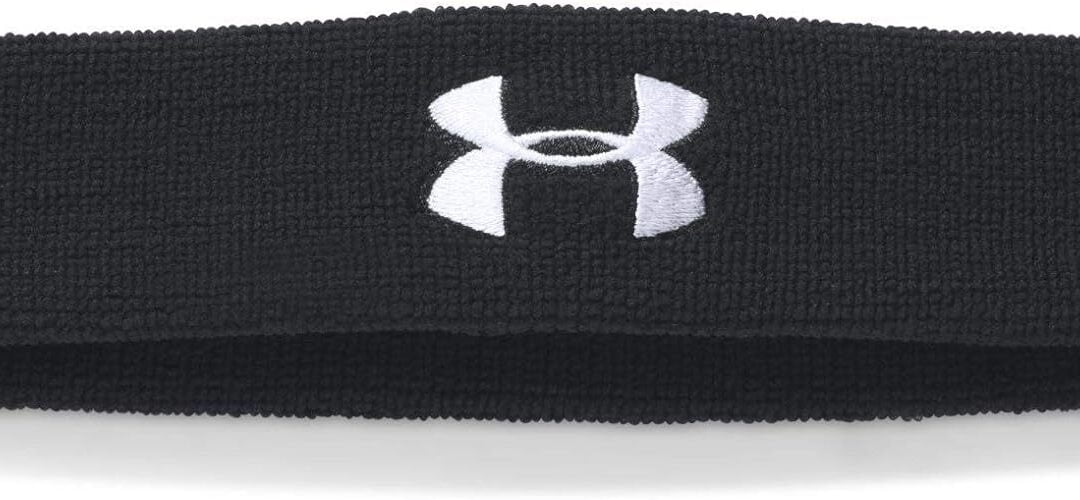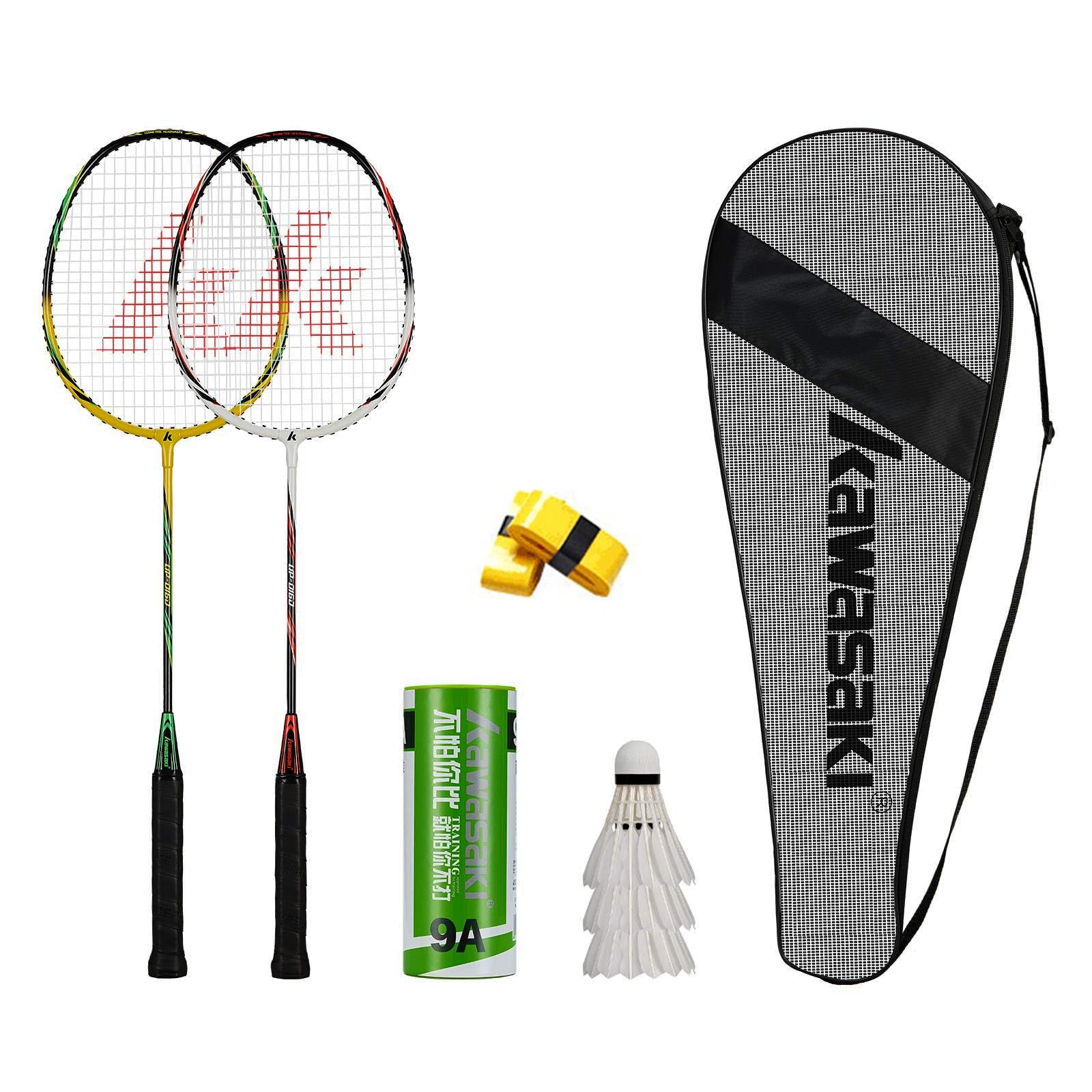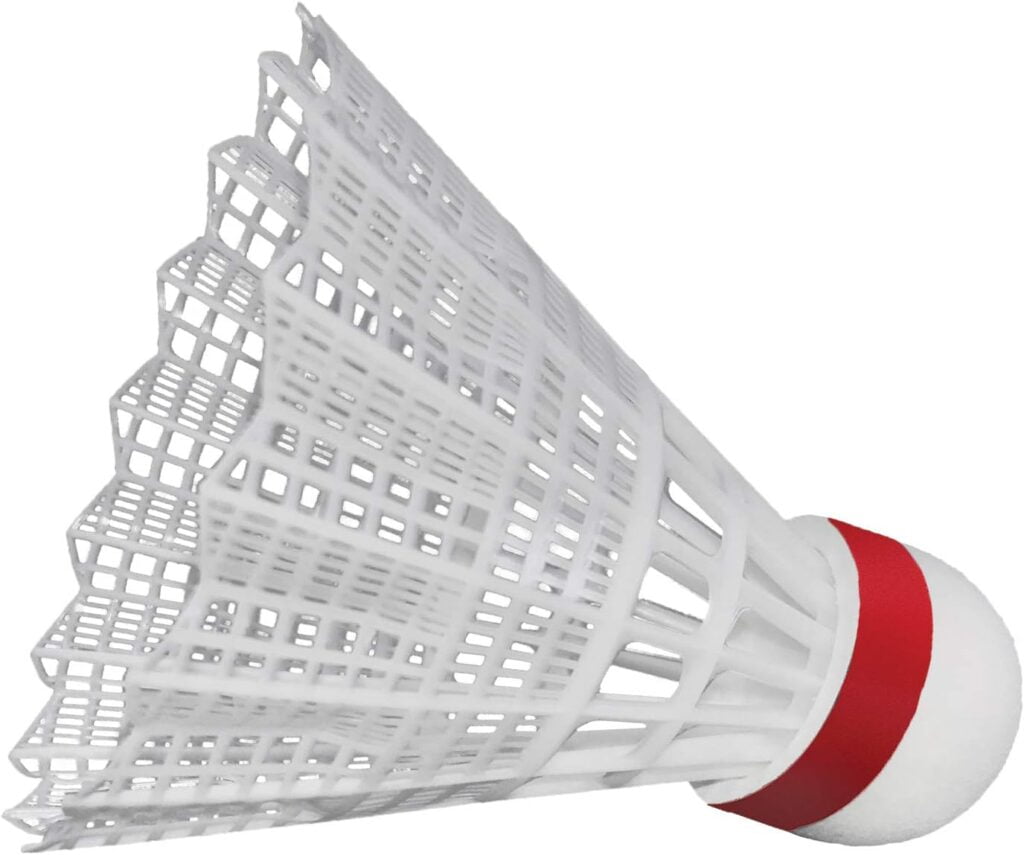Discover the benefits of sweatbands for your fitness routine. Enhance your performance and stay comfortable with these stylish and functional accessories.


A badminton shuttlecock, also known as a birdie, is a small projectile used in the sport of badminton. It is made up of a rounded cork or rubber base with a series of feathers or synthetic materials attached to it. The shuttlecock is designed to be hit back and forth over the net using a racket, with the goal of keeping it in the air and preventing it from touching the ground.
There are two main types of badminton shuttlecocks: feather and nylon/plastic.
Feather shuttlecocks are the traditional and preferred option for professional and competitive play. They are made using feathers from the left wing of a goose or duck, which are carefully selected for their strength, flexibility, and durability. The feathers are fixed into the cork base using a special adhesive and are then shaped and trimmed to create a symmetrical and aerodynamic design.
Nylon/plastic shuttlecocks are a more affordable and durable alternative to feather shuttlecocks. They are made using synthetic materials such as nylon or plastic for the base and skirt.

When choosing a badminton shuttlecock, there are several factors to consider:
The level of play, whether recreational or competitive, will influence the type of shuttlecock you choose. Feather shuttlecocks are recommended for competitive play, while nylon/plastic shuttlecocks are suitable for recreational play.
The playing conditions, such as the temperature and humidity, can affect the flight characteristics of the shuttlecock. Feather shuttlecocks are more sensitive to changes in weather conditions, while nylon/plastic shuttlecocks are more resilient.
Your budget will also play a role in your choice of shuttlecock. Feather shuttlecocks are more expensive but offer better performance, while nylon/plastic shuttlecocks are more affordable but may not provide the same level of gameplay experience.
Ultimately, personal preference is an important factor in choosing a shuttlecock. Some players may prefer the realistic flight of feather shuttlecocks, while others may prioritize durability and cost-effectiveness.

To ensure the longevity and performance of your badminton shuttlecocks, follow these tips for care and maintenance:
Store your shuttlecocks in a cool and dry place to prevent damage to the feathers or base. Avoid exposing them to direct sunlight or extreme temperatures.
Rotate your shuttlecocks regularly during practice sessions to distribute wear evenly. Replace shuttlecocks that show signs of damage or wear, such as broken feathers or a distorted base.
If you are using feather shuttlecocks, clean them gently using a damp cloth to remove dirt or debris. Avoid using water or other cleaning agents, as this can damage the feathers.
Avoid hitting the shuttlecock with excessive force, as this can cause the feathers to break or detach. Use controlled and accurate shots to prolong the lifespan of your shuttlecocks.
Moisture can damage the feathers of feather shuttlecocks, so make sure to keep them dry during gameplay and storage. If they do get wet, allow them to air dry naturally before using them again.monly used in professional tournaments and are often seen as a recreational option.
When choosing a badminton shuttlecock, there are several factors to consider. The level of play, whether recreational or competitive, will influence the type of shuttlecock you choose. Feather shuttlecocks are recommended for competitive play, while nylon/plastic shuttlecocks are suitable for recreational play.
The playing conditions, such as the temperature and humidity, can affect the flight characteristics of the shuttlecock. Feather shuttlecocks are more sensitive to changes in weather conditions, while nylon/plastic shuttlecocks are more resilient.
Your budget will also play a role in your choice of shuttlecock. Feather Badminton shuttlecocks are more expensive but offer better performance, while nylon/plastic shuttlecocks are more affordable but may not provide the same level of gameplay experience.
Ultimately, personal preference is an important factor in choosing a shuttlecock. Some players may prefer the realistic flight of feather shuttlecocks, while others may prioritize durability and cost-effectiveness.
To ensure the longevity and performance of your badminton shuttlecock, it is important to take care of them. Store your shuttlecocks in a cool and dry place to prevent damage to the feathers or base. Rotate your shuttlecocks regularly during practice sessions to distribute wear evenly. Replace shuttlecocks that show signs of damage or wear. Clean feather shuttlecocks gently using a damp cloth to remove dirt or debris. Avoid hitting the shuttlecock with excessive force, as this can cause the feathers to break or detach. Keep shuttlecocks dry during gameplay and storage to prevent damage to the feathers.
In conclusion, choosing the right badminton shuttlecock is essential for a quality gameplay experience. Consider factors such as the level of play, playing conditions, budget, and personal preference when making your decision. Whether you choose feather or nylon/plastic shuttlecocks, proper care and maintenance will help prolong their lifespan and performance. Enjoy the game of badminton with the perfect shuttlecock!

A badminton shuttlecock, also known as a birdie, is a small projectile used in the sport of badminton. It is made up of a rounded cork or rubber base with a series of feathers or synthetic materials attached to it. The shuttlecock is designed to be hit back and forth over the net using a racket, with the goal of keeping it in the air and preventing it from touching the ground.
There are two main types of badminton shuttlecocks: feather and nylon/plastic.
Feather shuttlecocks are the traditional and preferred option for professional and competitive play. They are made using feathers from the left wing of a goose or duck, which are carefully selected for their strength, flexibility, and durability. The feathers are fixed into the cork base using a special adhesive and are then shaped and trimmed to create a symmetrical and aerodynamic design.
Advantages of Feather Shuttlecocks:
Disadvantages of Feather Shuttlecocks:
Nylon/plastic shuttlecocks are a more affordable and durable alternative to feather shuttlecocks. They are made using synthetic materials such as nylon or plastic for the base and skirt.
Advantages of Nylon/Plastic Shuttlecocks:
Disadvantages of Nylon/Plastic Shuttlecocks:
When choosing a badminton shuttlecock, there are several factors to consider:
The level of play, whether recreational or competitive, will influence the type of shuttlecock you choose. Feather shuttlecocks are recommended for competitive play, while nylon/plastic shuttlecocks are suitable for recreational play.
The playing conditions, such as the temperature and humidity, can affect the flight characteristics of the shuttlecock. Feather shuttlecocks are more sensitive to changes in weather conditions, while nylon/plastic shuttlecocks are more resilient.
Your budget will also play a role in your choice of shuttlecock. Feather shuttlecocks are more expensive but offer better performance, while nylon/plastic shuttlecocks are more affordable but may not provide the same level of gameplay experience.
Ultimately, personal preference is an important factor in choosing a shuttlecock. Some players may prefer the realistic flight of feather shuttlecocks, while others may prioritize durability and cost-effectiveness.
To ensure the longevity and performance of your badminton shuttlecocks, follow these tips for care and maintenance:
Store your shuttlecocks in a cool and dry place to prevent damage to the feathers or base. Avoid exposing them to direct sunlight or extreme temperatures.
Rotate your shuttlecocks regularly during practice sessions to distribute wear evenly. Replace shuttlecocks that show signs of damage or wear, such as broken feathers or a distorted base.
If you are using feather shuttlecocks, clean them gently using a damp cloth to remove dirt or debris. Avoid using water or other cleaning agents, as this can damage the feathers.
Avoid hitting the shuttlecock with excessive force, as this can cause the feathers to break or detach. Use controlled and accurate shots to prolong the lifespan of your shuttlecocks.
Moisture can damage the feathers of feather shuttlecocks, so make sure to keep them dry during gameplay and storage. If they do get wet, allow them to air dry naturally before using them again.

Choosing the right badminton shuttlecock is essential for a quality gameplay experience. Consider factors such as the level of play, playing conditions, budget, and personal preference when making your decision. Whether you choose feather or nylon/plastic shuttlecocks, proper care and maintenance will help prolong their lifespan and performance. Enjoy the game of badminton with the perfect shuttlecock!
Choosing the right badminton shuttlecock is essential for a quality gameplay experience. Consider factors such as the level of play, playing conditions, budget, and personal preference when making your decision. Whether you choose feather or nylon/plastic shuttlecocks, proper care and maintenance will help prolong their lifespan and performance. Enjoy the game of badminton with the perfect shuttlecock!
A badminton shuttlecock, also known as a birdie, is a small projectile used in the sport of badminton. It is made up of a rounded cork or rubber base with a series of feathers or synthetic materials attached to it. The shuttlecock is designed to be hit back and forth over the net using a racket, with the goal of keeping it in the air and preventing it from touching the ground.
There are two main types of badminton shuttlecocks: feather and nylon/plastic.
Feather shuttlecocks are the traditional and preferred option for professional and competitive play. They are made using feathers from the left wing of a goose or duck, which are carefully selected for their strength, flexibility, and durability. The feathers are fixed into the cork base using a special adhesive and are then shaped and trimmed to create a symmetrical and aerodynamic design.
Feather shuttlecocks offer better flight characteristics and trajectory compared to nylon/plastic shuttlecocks. This is because the feathers create a natural drag and provide stability in the air. They closely resemble the flight of a bird, making the gameplay more realistic and challenging. Feather shuttlecocks are the preferred choice for professional players and tournaments due to their superior performance.
However, feather shuttlecocks are more expensive compared to nylon/plastic shuttlecocks. They also have a shorter lifespan and require proper storage in a cool and dry place to prevent the feathers from becoming brittle or damaged.
Nylon/plastic shuttlecocks, on the other hand, are a more affordable and durable alternative to feather shuttlecocks. They are made using synthetic materials such as nylon or plastic for the base and skirt. Nylon/plastic shuttlecocks are more cost-effective and have a longer lifespan compared to feather shuttlecocks. They are also less affected by changes in temperature and humidity, making them suitable for outdoor play.
However, nylon/plastic shuttlecocks do not offer the same level of flight characteristics and trajectory as feather shuttlecocks. They tend to have a flatter and faster flight, which can affect the gameplay experience. Nylon/plastic shuttlecocks are not com